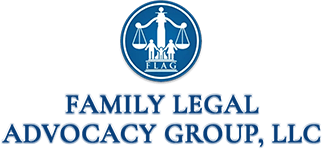More than 500 school employees in Prince George’s County have been placed on administrative leave at some point during this school year in response to alleged child abuse or neglect — a sharp spike over previous years amid a push to report suspicious conduct.
The jump in investigations follows a string of child abuse scandals that have rocked the Maryland school system. Cases of administrative leave have risen more than 600 percent since 2014-15, the school year before the scandals came to light, according to data obtained by The Washington Post.
Some see the rise in reports as evidence of a cultural shift in a school system where many were not accustomed to reporting potential problems. But others view the phenomenon as an overcorrection that has left many educators demoralized and taken a toll in classrooms. Parents wait for weeks or months to hear whether their children’s teachers will return.
Sixty-nine county school employees were placed on leave in 2014-15. The total rose to 194 last year as child abuse issues drew increased attention and soared to more than 500 by April of this school year. Most of those off the job are teachers.
“It’s been absolutely detrimental to student learning,” said David Murray, a school board member who co-authored a petition calling for a review and revamping of policies. “Imagine not having your math teacher or science teacher for two to three months. That’s happened frequently.”
Employee conduct has been a flash point since February 2016, when Deonte Carraway, then an elementary school volunteer, was accused of video-recording students as he directed them to perform sex acts. Carraway, formerly a paid classroom aide, has pleaded guilty to federal child pornography charges and awaits trial on state charges.
Prince George’s was also roiled by abuses in its Head Start early education program, which led to the loss of a $6.4 million federal grant, then again following charges against a bus aide alleged to have abused two children with special needs.
Efforts to retrain employees started last year, and the school board revised policies last summer. With a greater emphasis on the need to report inappropriate behavior, school officials have logged 650 reports as of April this year, said Lewis Robinson, the district’s director of employee and labor relations.
About 65 reports have been investigated by Child Protective Services. But school officials also investigate and have found some employees in violation of school system rules even if their actions — shoving or grabbing a student, for example — fall short of CPS involvement.
Most employees have been cleared, but Robinson estimated that 30 percent of the more than 500 employees placed on leave have been disciplined, and about 5 to 10 percent have been recommended for termination.
“It just kind of runs all over the place in terms of what is reported,” he said. “Are all of them the kinds of things that elevate themselves to actual abuse or neglect or sexual abuse? No.”
School board Chairman Segun Eubanks said the school district — the second-largest in Maryland, with more than 132,000 students and about 20,000 employees — is on the right track, moving toward more positive relationships in schools, with no tolerance for abuse or neglect of students.
“The culture of nonreporting is what got us here,” he said.
Although the number of employees on leave is a concern, he said, the district is working to strengthen its investigative processes, help employees better understand what’s reportable, and improve its use of substitute teachers.
He said the caseload has declined recently and that he hopes next year’s numbers are significantly lower. A tally done in April showed about 210 employees on leave for alleged abuse and neglect, including 153 teachers, according to Robinson.
“If the numbers that we see now are a temporary recalibration process, we’re okay with it,” Eubanks said. “If this was to be the way the system worked in perpetuity, it would be destined to fail.”
In neighboring Montgomery County, with a larger school system, 71 employees have been placed on leave at some point this school year for alleged abuse or neglect, schools officials said. They said Child Protective Services has screened out, ruled out or not been able to substantiate allegations in about 90 percent of the cases.
In Prince George’s, school staff have worried that the slightest misstep or false accusation could mean they are off the job. As teachers on leave wait out investigations at home, substitute teachers have filled in for weeks or months.
Parents say they get little or no information because such issues are considered private personnel matters.
Llew Brown, a father of three in Bowie, says his ninth-grade daughter, Madeleine, started at Bowie High School this year without her assigned science teacher, so substitute teachers have filled in for nearly eight months.
Then in March, the teenager’s Spanish teacher was suddenly gone.
Brown says he thinks principals have a hard task and probably lack the resources to replace teachers quickly. But he says schools need to communicate more in those situations and assure parents that student needs will be met.
Madeleine said that while she has managed well in science, her substitute teacher in Spanish doesn’t speak the language. She worries that she won’t be prepared for a year-end test, or for the next course.
“It means I won’t be ready for Spanish 4 next year, which is supposed to be pretty hard,” she said.
Four school board members, including Murray and the student member, posted a petition this month calling for change to practices that “have done more harm than good.”
“I hope we can take action and fix it before next school year starts because there’s no way we can afford to have this many employees out for another year,” Murray said.
Robinson said the district is improving its efficiency and has started a quick review process — taking just a few days — for certain types of cases. Turning around other cases takes 35 to 45 days on average, he said, down from 60 days or more.
There are not signs of widespread false or vengeful reporting against employees, he said.
Employee morale is an issue, he said, but “our concern first has to be about the safety of kids in the building, and if were going to err, we’re going to err on the side of kids.”
Kevin Maxwell, chief executive of county schools, has not spoken extensively in public on the issue in recent months, officials said. Last fall he cited the spike in reporting as a sign of progress.
In schools, no one disputes the need for safety but many question how changes are being implemented and voice concern about the toll of employee absences.
School officials did not have estimates about the cost of using so many substitute teachers to cover for employees out on administrative leave, who are also paid.
Kathy Cavanaugh, a mother who lives in Bowie, said her daughter’s orchestra teacher at Benjamin Tasker Middle School has been out for a year. Mostly her daughter has had substitute teachers, she said, but for one stretch — lasting about a quarter — there was no assigned instructor and no grades. Students were supervised but not taught, she said.
“She’s lost a tremendous amount of ground,” Cavanaugh said. “She’s still playing the same music she was playing a year ago.”
Doris Reed, executive director of the Association of Supervisory and Administrative School Personnel, said the school environment is the worst she has seen in 26 years in her position. “It’s a culture of fear,” she said. “They’re scared to say anything to the students, let alone touch them.”
The school system needs to rethink its practices, she said. “They need to use common sense,” she said. “Instead of knee-jerk reactions, they need to see if something even happened.”


